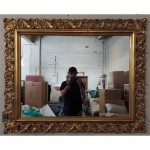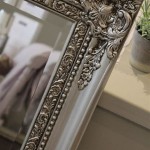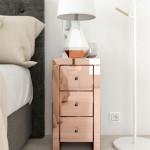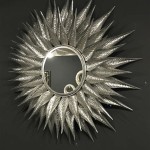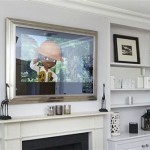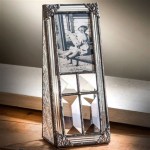How Do You Make a Backlit Mirror?
Backlit mirrors, with their soft, ambient glow, are a stylish and functional addition to any bathroom or vanity. Creating this elegant feature involves several key steps, from selecting the right materials to implementing the lighting effectively. This article outlines the process of constructing a backlit mirror, providing a clear guide for achieving professional results.
Planning and Material Selection
The initial stage involves careful planning and gathering the necessary materials. Accurate measurements of the desired mirror size are crucial. This determines the dimensions of the frame and the backing required for mounting the lighting. Choosing the type of mirror is also important. Standard mirrors work well, but low-iron mirrors offer superior clarity and minimize the greenish tinge sometimes seen with standard mirrors, especially noticeable with backlighting.
Selecting the right lighting is paramount. LED strip lights are the most popular choice due to their energy efficiency, flexibility, and availability in various color temperatures. Warm white (2700-3000K) creates a cozy and inviting ambiance, while cool white (4000-5000K) provides a brighter, more modern feel. Consider the desired brightness, measured in lumens, and the IP rating, indicating the level of water resistance. For bathroom applications, a higher IP rating is recommended.
Other essential materials include a frame material (wood, metal, or plastic), a mirror adhesive, a power supply for the LED strips, wiring, and a diffuser to soften the light. Safety equipment such as safety glasses and gloves are also recommended.
Constructing the Frame and Mounting the Mirror
The frame provides structural support for the mirror and houses the lighting. It should be deep enough to accommodate the LED strips, wiring, and diffuser. If using wood, ensure it is properly sealed to protect it from moisture, especially in bathroom environments. Cut the frame pieces to the desired dimensions and assemble them using appropriate joinery techniques, such as wood glue and screws, or metal brackets for metal frames.
Once the frame is assembled, attach the mirror to the frame using a strong mirror adhesive. Apply the adhesive evenly to the back of the mirror or to the frame, ensuring full contact to prevent the mirror from shifting or detaching. Allow the adhesive to cure completely according to the manufacturer's instructions before proceeding.
Installing the Lighting and Wiring
With the mirror securely mounted, the next step is installing the LED strips. Clean the frame surface where the strips will be adhered to ensure proper adhesion. Peel off the backing from the adhesive strip on the LED lights and carefully attach them to the inside of the frame, facing the mirror. Position the strips so the light reflects evenly across the mirror surface. Avoid placing them too close to the edge to prevent light leakage.
Connect the LED strips to the power supply, following the wiring diagram provided with the LED kit. Ensure all connections are secure and properly insulated. Test the lighting before proceeding to ensure it functions correctly. If using a dimmer switch, integrate it into the wiring at this stage.
Attach the diffuser to the frame, covering the LED strips. The diffuser softens the light, creating a more uniform and aesthetically pleasing glow. It also helps protect the LED strips from dust and moisture. Different diffuser materials are available, including frosted acrylic and polycarbonate. Choose a diffuser that complements the desired aesthetic and provides the desired level of light diffusion.
Mounting and Final Touches
Once the lighting and diffuser are in place, the backlit mirror is ready for mounting. Depending on the size and weight of the mirror, use appropriate mounting hardware to securely attach it to the wall. Ensure the mounting points are strong enough to support the weight of the mirror and the frame. Conceal the wiring by routing it through the wall or using a cable management system.
After mounting, perform a final inspection to ensure all components are secure and the lighting functions correctly. Clean the mirror surface to remove any fingerprints or smudges. The backlit mirror is now ready to enhance the ambiance and functionality of the space.

How To Backlight A Mirror 14 Steps With Pictures Wikihow

Bathroom Remodel Diy Backlit Mirror Leah And Joe Home Projects Crafts

How To Backlight A Mirror 14 Steps With Pictures Wikihow

Backlit Mirror 5 Steps Instructables

How To Backlight A Mirror 14 Steps With Pictures Wikihow

Bathroom Remodel Diy Backlit Mirror Leah And Joe Home Projects Crafts

Bathroom Remodel Diy Backlit Mirror Leah And Joe Home Projects Crafts

Backlit Mirror 5 Steps Instructables

Get This Look 2 Backlit Bathroom Mirror Inspired Led

25 Beautiful Diy Vanity Mirror That Is Easy And To Do Most Of This Projects Can Be Done Un Bathroom Makeover Design Mirrors

